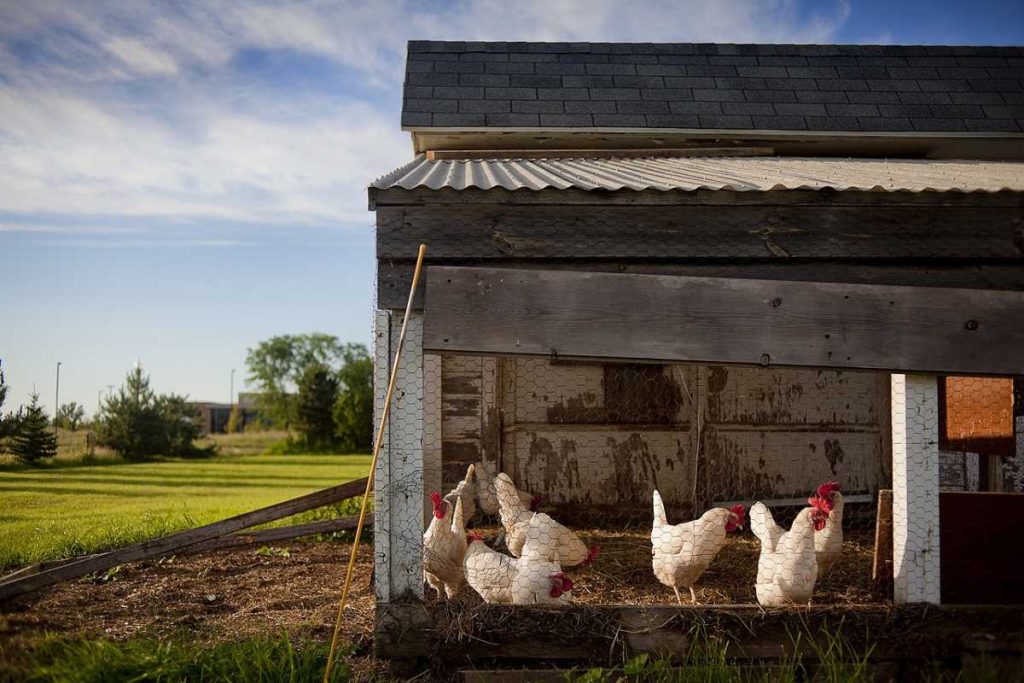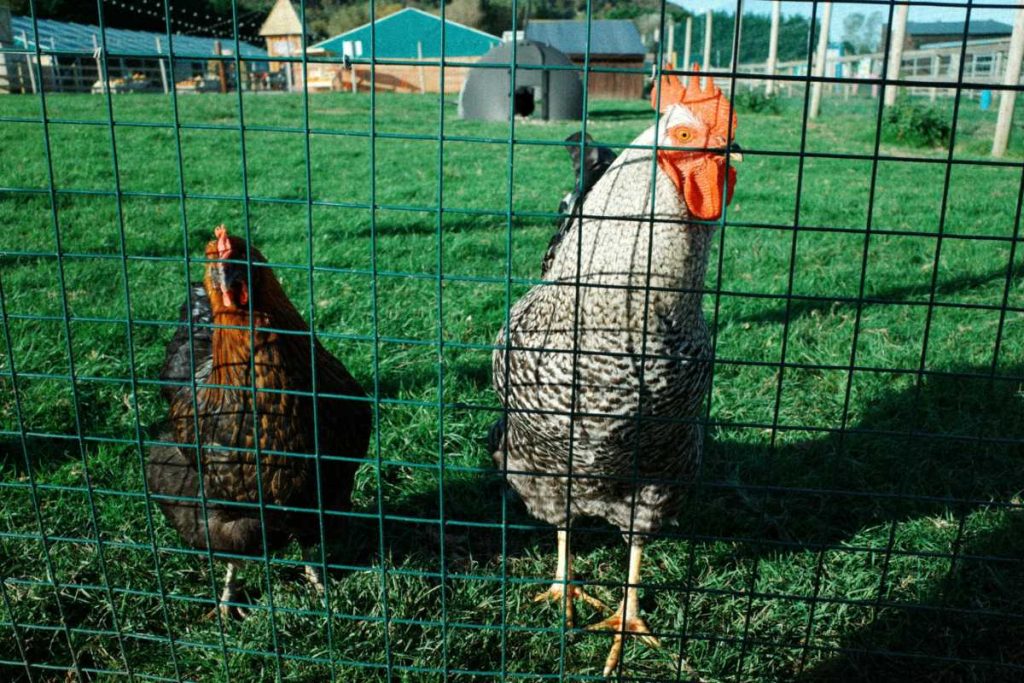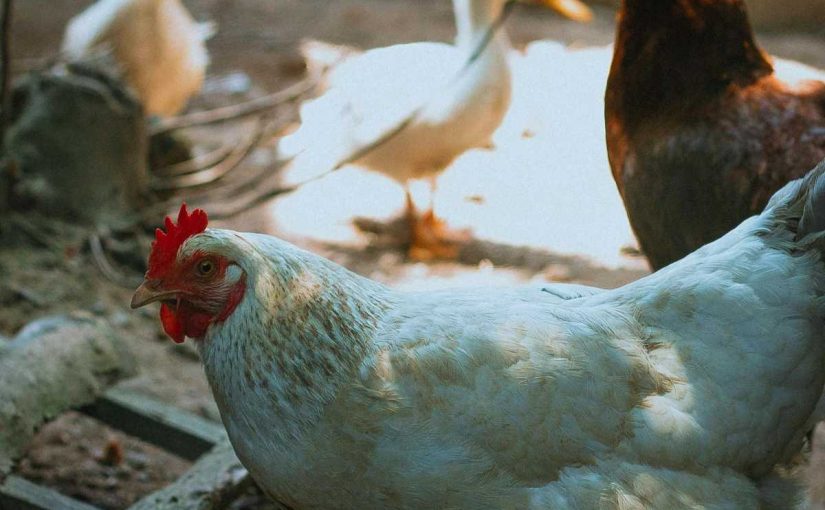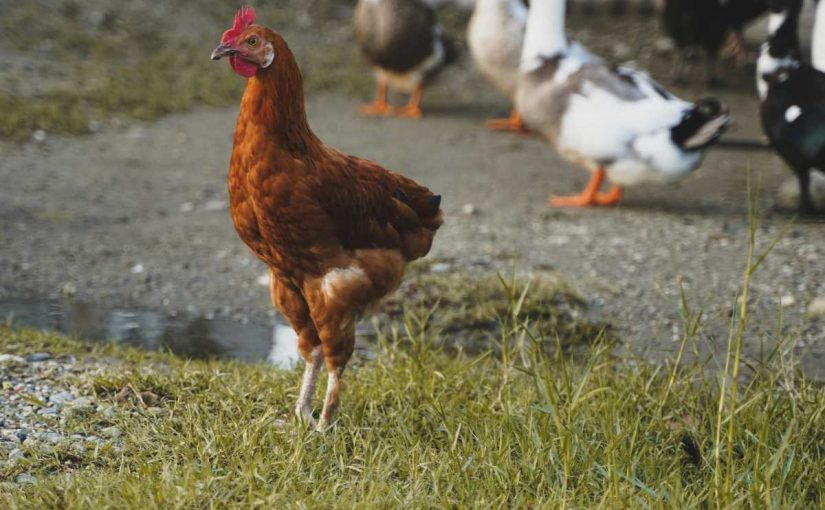Keeping your chickens safe from predators is one of the most crucial responsibilities for any poultry owner. Chickens are vulnerable to a variety of threats, including raccoons, foxes, hawks, and even domestic pets. By implementing effective protective measures, you can ensure the safety and security of your flock. Here are eight detailed ways to safeguard your chicken coop from predators.

1. Secure Fencing
Importance of Strong Fencing
A sturdy fence serves as your first line of defense against potential threats. Many predators will attempt to dig under or climb over fences, making it essential to invest in quality materials.
How to Do It
- Height: Use fencing that is at least 6 feet high. This height is sufficient to deter many climbing predators, including raccoons and foxes.
- Bury the Bottom: Bury the bottom of the fence at least 12 inches deep to prevent digging. You can also extend the bottom of the fence outwards to create an apron that makes it harder for predators to dig underneath.
- Materials: Opt for strong materials such as chain link, welded wire, or stock fencing. Avoid using chicken wire as it is flimsy and can easily be compromised.
2. Secure the Coop Structure
Importance of a Well-Built Coop
A sturdy coop is essential for protecting your chickens from predators. Predators can be cunning and persistent, so ensuring the coop is secure is vital.
How to Do It
- Solid Walls: Construct the coop using robust materials such as wood or metal. Avoid flimsy materials that predators can easily breach.
- Check for Gaps: Regularly inspect the coop for gaps and holes, especially around doors and windows. Seal any openings with appropriate materials to prevent entry.
- Locking Mechanisms: Install heavy-duty latches and locks on doors. Consider using padlocks for extra security, especially on doors that are frequently accessed.
3. Install Predator-Proof Hardware Cloth
Why Hardware Cloth is Effective
Hardware cloth is a sturdy, mesh-like material that provides extra protection against small predators, which can often slip through larger gaps.
How to Do It
- Cover Openings: Use hardware cloth (with openings no larger than 1 inch) to cover windows, vents, and other openings. This prevents small animals like weasels, rats, and snakes from entering the coop.
- Reinforce Vulnerable Areas: Areas such as doors and access points should be reinforced with an additional layer of hardware cloth to provide extra security.
4. Elevate the Coop

Benefits of Elevation
Elevating your chicken coop not only helps keep it dry but also makes it more difficult for ground-dwelling predators to access.
How to Do It
- Build on Stilted Legs: Raise the coop at least 1-2 feet off the ground. This elevation creates a barrier for many ground predators and can also help with ventilation.
- Solid Flooring: Ensure the flooring of the coop is solid and secure. Wooden flooring should be reinforced, and the edges should be sealed to prevent any entry points.
5. Install Motion-Activated Lights
How Lights Deter Predators
Motion-activated lights can startle nocturnal predators and deter them from approaching your coop.
How to Do It
- Strategic Placement: Install motion-activated lights around the perimeter of the coop and run. Ensure they cover all access points, especially areas that may be less visible.
- Brightness and Sensitivity: Choose lights that are bright enough to illuminate the area and have adjustable sensitivity settings to avoid false alarms caused by small animals.
6. Provide Safe Roaming Areas
Creating a Safe Environment
A secure outdoor run is crucial for keeping your chickens safe while allowing them to enjoy fresh air and sunlight.
How to Do It
- Covered Runs: Use netting or wire to cover the outdoor run, protecting against aerial predators like hawks and owls. Ensure the netting is taut and secure to prevent sagging that could allow entry.
- Multiple Enclosures: If space permits, create multiple enclosures or runs for different groups of chickens. This allows you to rotate flocks and reduce the risk of disease while making it more difficult for predators to access all areas at once.
7. Implement a Predator Control Strategy
Why a Control Strategy is Important
Understanding local predator populations and implementing effective control measures can significantly reduce risks to your flock.
How to Do It
- Monitor Predator Activity: Regularly check for signs of predator activity, such as tracks, droppings, or disturbances in the area. Identifying the type of predator can help you tailor your protection measures.
- Use Deterrents: Utilize natural deterrents such as motion-activated noise makers or shiny objects (like CDs or aluminum foil) that can scare away birds of prey. Additionally, consider using decoys, such as fake owls, to deter smaller birds.
- Trapping or Hunting: If you have persistent predators, consider working with local wildlife control experts for humane trapping or removal. Always check your local regulations regarding trapping and wildlife management.
8. Be Vigilant and Regularly Inspect
Importance of Regular Inspections
Consistent checks help identify potential vulnerabilities before they lead to problems. Being proactive is key to preventing predator attacks.
How to Do It
- Daily Checks: Make it a habit to inspect the coop and run daily. Look for signs of wear, damage, or any attempts by predators to breach the enclosure.
- Seasonal Maintenance: Perform thorough inspections at the beginning of each season. Repair any damage, reinforce weak points, and check that all locks and latches are functioning properly.
- Engage with Your Chickens: Spend time observing your flock. Changes in behavior may signal distress or suggest a predator threat. Familiarizing yourself with their normal behavior allows you to detect unusual activities.
Conclusion
Protecting your chicken coop from predators is vital for maintaining the health and safety of your flock. By implementing these eight strategies—securing fencing, reinforcing the coop structure, using hardware cloth, elevating the coop, installing motion-activated lights, providing safe roaming areas, implementing a control strategy, and being vigilant with regular inspections—you can significantly reduce the risk of predator attacks.
A proactive approach not only ensures the well-being of your chickens but also grants you peace of mind as a responsible poultry keeper. With the right measures in place, you can create a safe and secure environment for your chickens to thrive, allowing you to enjoy the rewarding experience of raising your flock for years to come.




